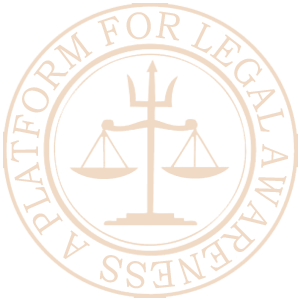YouTube video link on this topic is shared below:
Introduction
The 'Law of Torts‘originated from the Common Law of England, which is generally civil in nature. It is well developed in the UK, USA, and other advanced countries. English tort law concerns civil wrongs, as distinguished from criminal wrongs, in the law of England and Wale. A tort is not enforced by the police; it is a civil action taken by one citizen against another and tried in a court in front of a judge (rarely, with a Jury).
In India, the Law of Torts is not codified like other branches of law, such as the Indian Contract Act, 1872, and the Indian Penal Code, 1860. It is still in the process of development. Although India generally follows the UK approach, certain differences may indicate judicial activism, hence creating controversy.
Meaning of 'Tort'
Tort is derived from Latin word, tortum, which means "twisted“ or wrong/injury. Here injury is not physical in nature but a legal injury.
The term 'Tort' means a wrongful act committed by a person, causing injury or damage to another, thereby the injured institutes (files) an action in Civil Court for a remedy viz., unliquidated damages or injunction or restitution of property or other available relief. Unliquidated damages mean the amount of damages to be fixed or determined by the Court.
According to Prof. Winfield, Tortious, "Liability arises from breach of a duty primarily fixed by law; this duty is towards persons generally, and its breach is redressable by an action for unliquidated damages".
Sir John Salmond defined "Tort as a civil wrong for which the remedy is common law action for unliquidated damages and which is not exclusively the breach of contract or the breach of trust or other merely equitable obligation".
Legal Injury
In common law jurisdictions, a tort is a civil wrong that unfairly causes someone else to suffer loss or harm, resulting in legal liability for the person who commits the tortious act.
Legal injuries are not limited to physical injuries and may include emotional, economic, or reputational injuries and violations of privacy, property, or constitutional rights. Torts include such varied topics as auto accidents, false imprisonment, defamation, product liability, copyright infringement, and environmental pollution (toxic torts).
Wrong
There are two types of wrong:-
i. Public wrong - Crime is a Public Wrong. These are acts that are tried in Criminal Courts and are punishable under the Penal Law (such as the Indian Penal Code, 1860 in India)
ii. Private Wrong—Tort is a Private Wrong. It involves acts against individuals or people within a community and is tried in Civil Courts.
To understand better, it is necessary to understand the difference between civil and criminal law.
Types of Torts
Intentional Torts
An intentional tort is when an individual or entity purposely engages in conduct that causes injury or damage to another. For instance, striking someone in a fight would be considered an intentional act that would fall under the tort of a battery, whereas accidentally hitting another person would not qualify as “intentional” because there was no intent to strike the individual (…however, this act may be considered negligent if the person hit was injured). Although it may seem like an intentional tort can be categorised as a criminal case, the two have important differences. A crime can be defined as a wrongful act that injures or interferes with the interests of society. In comparison, intentional torts are wrongful acts that injure or interfere with an individual’s well-being or property. While the government brings criminal charges and can result in a fine or jail sentence, tort charges are filed by a plaintiff seeking monetary compensation for damages that the defendant must pay if they lose. Sometimes, a wrongful act may involve both a criminal and tort case.
Negligence
There is a specific code of conduct that every person is expected to follow and the legal duty of the public to act a certain way to reduce the risk of harm to others. Failure to adhere to these standards is known as negligence. Negligence is by far the most prevalent type of tort. Unlike intentional torts, negligence cases do not involve deliberate actions but instead are when an individual or entity is careless and fails to provide a duty owed to another person. The most common examples of negligence torts are cases of slip and fall, which occur when a property owner fails to act as a reasonable person would, thus resulting in harm to the visitor or customer.
Strict Liability
Last are torts involving strict liability. Strict, or “absolute,” liability applies to cases where responsibility for an injury can be imposed on the wrongdoer without proof of negligence or direct fault. What matters is that an action occurred and resulted in the eventual injury of another person. Defective product cases are prime examples of when liability is maintained despite intent. In lawsuits such as these, the injured consumer only has to establish that their injuries were directly caused by the product in question to have the law on their side. The fact that the company did not “intend” for the consumer to be injured is not a factor.
Characteristics of torts:-
i. A tort is a private wrong that infringes on the legal rights of an individual or specific group of individuals.
ii. The person who commits a tort is called a "tort-feasor" or "Wrongdoer."
iii. The place of trial is the Civil Court.
iv. Tort litigation is compoundable i.e. the plaintiff can withdraw the suit filed by him.
v. Tort is a species of civil wrong.
vi. Tort is other than a breach of contract.
vii. The remedy in tort is unliquidated damages or other equitable relief to the injured.
Although 'Tort' is a civil wrong, it differs from contract and breach of trust. Some of the major distinctions of torts are discussed below:-
Distinction between Tort and Crime














